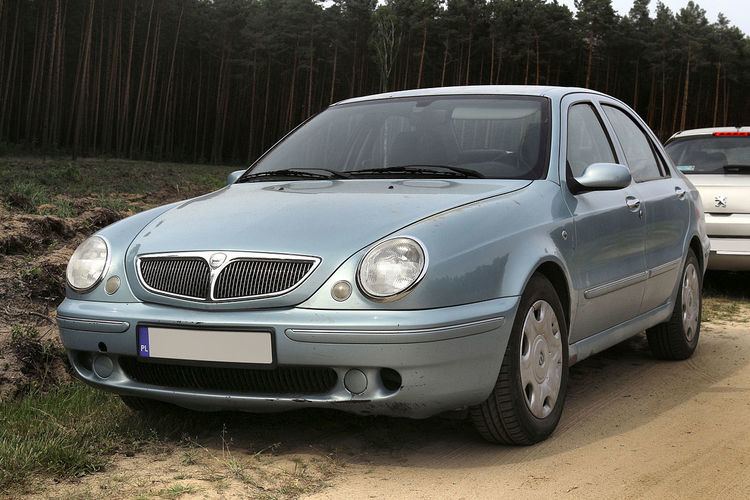Production 1998—2005 | ||
 | ||
Designer Enrico Fumia at Centro Stile LanciaMichael Vernon Robinson at Centro Stile Lancia (final design)Flavio Manzoni (interiors) Body style 4-door saloon5-door estate | ||
The Lancia Lybra (Type 839) was a compact executive car produced by Italian Fiat Auto's premium marque Lancia between 1998 and 2005. Based on heavily modified Alfa Romeo 156 floorpan, it replaced the Dedra within Lancia's lineup, and was similarly as low-profile as its predecessor, rather than as popular as its Alfa sibling. Just like the Dedra, the Lybra was available as both a saloon and estate (billed SW by Lancia). Around 165,000 units were made.
Contents
Name
The model's name can be seen as a reference to the zodiac sign of Libra that was derived from the Latin word for balancing scale. It signalled an end of the previous Lancia naming theme involving the use of Greek letters as model names. The Lybra was built in the Rivalta plant near Turin until 2002 and after that in Mirafiori plant in Turin.
Styling
The Lybra was styled in Centro Stile Lancia, contrary to earlier Lancia models, which were commissioned from external design studios. Its styling was a clear departure from "rectangular" shapes prevalent in 1980s and 1990s Lancias, using heritage-inspired round headlights and other styling touches inspired by Lancias of the 1950s, like the Aurelia and Appia. Initial models were carried out by Enrico Fumia in 1992 and by the time of His departure from Lancia Centro Stile the project was finished by Michael Robinson. Main changes included round headlights. Interiors were designed by Flavio Manzoni.
On the other hand, it wasn't as edgy as the Lancia Thesis and later models, and still carried many references to 1990s Lancias, such as the shape of the grille, or the treatment of the upper body section of the wagon (reminiscent of that of the Lancia Kappa SW). Interestingly, the Lybra's very distinctive taillights were given to the 2001's facelift Fiat Marea sedan for the Latin American markets.
Trim levels
Standard trim levels included LS and LX. Starting in 2003 there was also Business and LS Plus in some markets, both had basic fabric seats. The last trim was called Emblema in the model year 2004, but presented for the first time in November 2002 at Bologna Motor Show. It was inspired by the classic famous Lancia Flaminia and came with tobacco brown leather interior (optional Alcantara), magnesium dashboard interior parts, exclusive 16 inch (10 spoke) allow wheels, privacy glass and a gloss painted black roof.
Special editions
Although there were no limited editions, there were at least two special editions. The first one was the Intensa Edition with characteristic darkened grille and dark grey pentagram-shaped alloys. Exterior palette available also with an exclusive dark grey colour 'Grigio Fontana'. Inside the Intensa featured a combination of black leather and dark grey alcantara seats and Bose sound system as standard. Second edition was an Executive Exclusive Edition featuring leather seats and rich equipment along with special 15-spoke alloy wheels. Both editions were available either as a berlina or station wagon with 2.0l gasoline or 1.9l or 2.4l diesel engines.
Specifications
The Lancia Lybra was a front-wheel drive car with transversely-mounted engines. The Lybra is available with a 5-speed manual, and the 2.0 L had an option of a 4-speed automatic transmission, called the Comfortronic by Lancia.
for Berlina/SW *to 100km/h **in g/km
